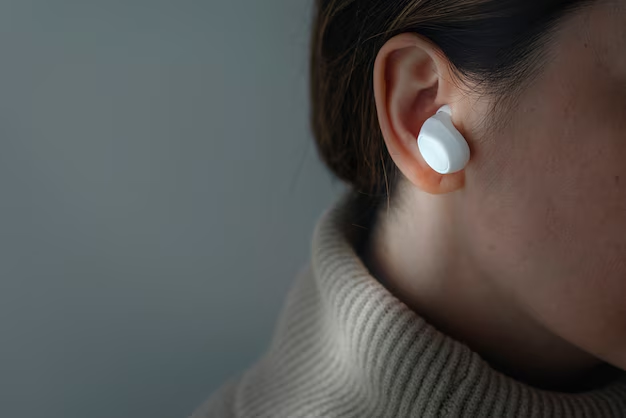Are Rechargeable Hearing Aids Truly More Moisture Resistant?
The world of hearing aids has seen numerous advancements over recent years, including the move toward more sophisticated, rechargeable models. One question that frequently arises in the "Hearing Aid FAQ" realm is whether these rechargeable hearing aids offer greater moisture resistance compared to their traditional battery-operated counterparts. As we explore this topic, we will consider various facets including moisture resistance, benefits of rechargeable batteries, and care tips to optimize your hearing aid's lifespan.
Understanding Moisture Resistance in Hearing Aids
Why Moisture Matters
Moisture is a common adversary for many electronic devices, and hearing aids are no exception. Exposure to water and humidity can cause corrosion, affect electronic circuits, and ultimately diminish the performance of hearing aids. Thus, moisture resistance is a significant feature to consider for anyone living in humid climates or leading active lifestyles.
IP Ratings Explained
One way to assess a hearing aid’s ability to withstand moisture is through the Ingress Protection (IP) rating. This system scores devices based on their resistance to dust and water. A higher IP rating signifies better resistance against these elements. When evaluating hearing aids, check for these ratings to understand the level of moisture protection offered.
Rechargeable Hearing Aids and Moisture Resistance
Rechargeable hearing aids are often designed with integrated batteries, which allows them to be built more robustly than those with removable batteries. This design can contribute to enhanced moisture resistance as it eliminates battery doors, a potential entry point for moisture. While this doesn’t necessarily mean rechargeable models are universally more moisture-resistant, it indicates a trend towards more seamless and resilient designs.
Benefits of Rechargeable Hearing Aids
Sustainable and Convenient
One of the most compelling reasons users gravitate towards rechargeable hearing aids is their convenience. Without the ongoing cost and environmental impact of disposable batteries, rechargeable models offer a sustainable alternative. Users merely need to charge their hearing aids daily or as needed, similar to other modern electronics.
Cost Efficiency Over Time
While the initial costs might be higher, rechargeable hearing aids can prove more cost-efficient in the long run. Users save on purchasing disposable batteries and are less inconvenienced by frequent replacements, which is a significant advantage for those with dexterity issues.
Enhanced Performance Features
Many modern rechargeable hearing aids come equipped with advanced digital features, such as Bluetooth connectivity and smartphone integration. These additions contribute to a more personalized and user-friendly experience. Plus, they often pair with apps that allow users to adjust settings and monitor battery life conveniently.
Care and Maintenance for Optimal Performance
Protecting Your Hearing Aids from Moisture
Whether your hearing aids are rechargeable or not, protecting them from moisture is essential. Here are some tips to increase the lifespan of your devices:
Avoid Showering or Swimming with Hearing Aids: Always remove your hearing aids before engaging in water activities.
Use a Hearing Aid Dehumidifier: These devices help remove moisture overnight, safeguarding your aids from corrosion.
Store in a Dry Environment: When not in use, keep your hearing aids in a dry, safe place away from humidity and heat.
Regular Cleaning
Ensuring your hearing aids are clean will prevent moisture buildup and enhance their longevity. Here’s how:
Daily Wipe Down: Gently wipe with a dry cloth to remove sweat and oils.
Weekly Deep Clean: Utilize a hearing aid cleaning kit or visit a professional for a thorough clean.
Ear Hygiene: Maintaining clean ears helps keep your devices free from wax buildup.
Battery Maintenance
Rechargeable batteries are integral to the device's performance. Here’s how to preserve their efficiency:
Charge Consistently: Establish a routine to ensure your aids are charged sufficiently before use.
Avoid Extreme Temperatures: Do not expose hearing aids to excessive heat or cold, which can affect battery performance.
Monitor Battery Health: Use any available apps to track battery health and performance.
Debunking Myths and Addressing Concerns
Are Rechargeable Aids Truly Better?
The debate on whether rechargeable hearing aids are superior centers largely on convenience and customization. Rechargeable models often offer advanced software and connectivity capabilities. However, these features don’t inherently make them superior in moisture resistance.
Common Misunderstandings
A common misconception is that rechargeable batteries make hearing aids waterproof. While designs may offer improved moisture resilience, no hearing aids are entirely waterproof. It's crucial to manage expectations, understanding that water-resistant does not mean waterproof.
Addressing Longevity Concerns
Some users worry about the longevity of rechargeable batteries. Most modern hearing aids have batteries that last several years before needing replacement. Manufacturer specifications should provide a good indication of expected battery lifespan, giving users a reliable timeline for when replacements might be necessary.
Practical Summary and Consumer Tips 💡
Here are some key considerations when evaluating the moisture resistance and overall benefits of rechargeable hearing aids:
- Moisture Resistance: Look for hearing aids with high IP ratings for enhanced protection against moisture.
- Convenience & Sustainability: Rechargeable models reduce waste and offer hassle-free daily charging.
- Cost-Efficient: Though initial costs may be higher, long-term savings from reduced battery purchases should be considered.
- Maintenance is Key: Regular cleaning and careful handling greatly enhance device longevity.
- Manage Expectations: Understand protection levels; water-resistant is not waterproof.
🌟 Pro Tip: Opt for hearing aids with removable rechargeable battery options to enable easy replacements in case of diminished battery performance.
Leveraging rechargeable hearing aids with moisture-resistant design features can truly enhance the hearing experience while adding convenience and sustainability to users' lives. By understanding their capabilities and limitations, consumers can better protect their devices and make informed choices about their hearing aid purchases.

Related Topics
- a Plus Hearing Aid Centers
- a Real Pain Showtimes Near Centerville
- Are Airpods Bad For Your Ears
- Are Apple Second Generation Airpods Hearing Aids
- Are Audien Hearing Aids Just Amplifiers
- Are Costco Hearing Aids As Good As Others
- Are Costco Hearing Aids Good
- Are Hearing Aid Domes Interchangeable
- Are Hearing Aid Subscriptions Worth It
- Are Hearing Aid Tax Deductible